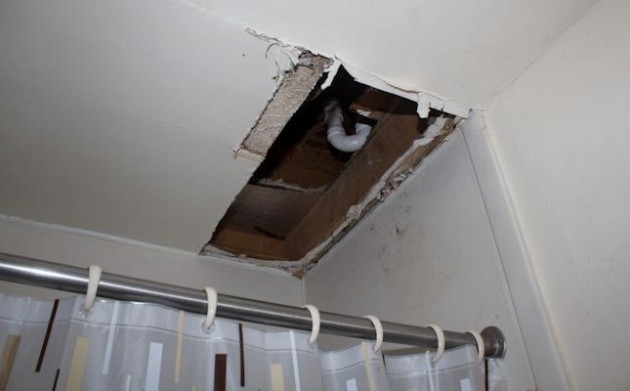
There have been six reported cases of mold in 2012 in the College Park Apartments according to college official Gina Mayer-Costa, director of Environmental Health and Safety at Ramapo.
Mold can cause health issues such as lung damage, allergic reactions and asthma according to the federal government. Because of the mild and serious health threats that mold presents, it is important for students and homeowners to understand how to spot, prevent and get rid of mold.
Mayer-Costa, who works closely with the construction on campus to assure that construction activities do not impact the air quality, says she does not see mold as a problem for the college.
“All reported incidents are investigated and followed up. We have an Indoor Air Quality Plan which addresses mold complaints and included response actions and preventative maintenance on our HVAC equipment,” Mayer-Costa said.
College Park Apartment resident Maria Procopio, a sophomore, said her and her roommates found mold in their CPA. The mold was spotted surrounding a hole in the ceiling of one of the bedrooms she said.
“Out of the six apartments investigated, one was found to have some mold and that was immediately cleaned by Facilities,” Mayer-Costa said.
When Maria Procopio contacted her Community Advisor about the possible mold, she said she was informed that the work order had been put in before she had arrived at the apartment.
“Our CA put in a work order over the summer and assumed that it was taken care of, but when we got there [in September] it was still there,” Procopio said.
Procopio added that after this, staff from different departments kept coming in and out of their apartment, but nothing was getting done.
“Originally, maintenance came in and bleached the mold, but it was only a temporary fix. The mold was visible again within a week,” said CPA resident Sarah McCartney, a sophomore.
After maintenance figured out what to fix, Procopio said it took about one month to fix the hole in the ceiling and the air conditioning unit in the apartment above that was causing the leak that resulted in mold.
“They never gave us step- by-step directions on what we should do. There were just a lot of people coming in and out to check the hole and then the air conditioning unit,” Procopio said.
She added, “There was little communication going on with the different sets [maintenance workers]. We were just lost in the process, but our CA was very helpful in keeping in contact with maintenance.”
Although maintenance has worked to remove the mold and fix the hole and air conditioner, Procopio said they now have mold coming back in their second bedroom.
“It has always been there and they would bleach it, but now I think they are going to have to fix that air conditioning unit too,” Procopio said.
CPA resident Tom Smolinoski, a sophomore, also said he put in a work order for mold in his apartment.
“We put in the first work order and were told that there were no leaking pipes in the ceiling causing moisture and that we could reduce moisture by taking shorter showers,” said Smolinoski.
Smolinski said he put in a second order when the mold was still present and received the same results.
“The mold kept growing and expanding on the ceiling until we put in a third work order, and they finally came in and opened the ceiling and found that the drain line was corroded,” said Smolinski.
Smolinski said it took close to three weeks until they opened the ceiling and discovered the problem causing the mold and began taking action to fix it.
According to the IAQ plan as of May 2012, the preventative maintenance is done twice a year, in the spring and fall. The maintenance schedule in all buildings and includes changing the filters, checking the HVAC system to ensure it is running properly. Condensate pans are inspected and, when needed biocide treatment is added, and indoor coils are inspected and cleaned as needed.
—
gmondo@ramapo.edu






